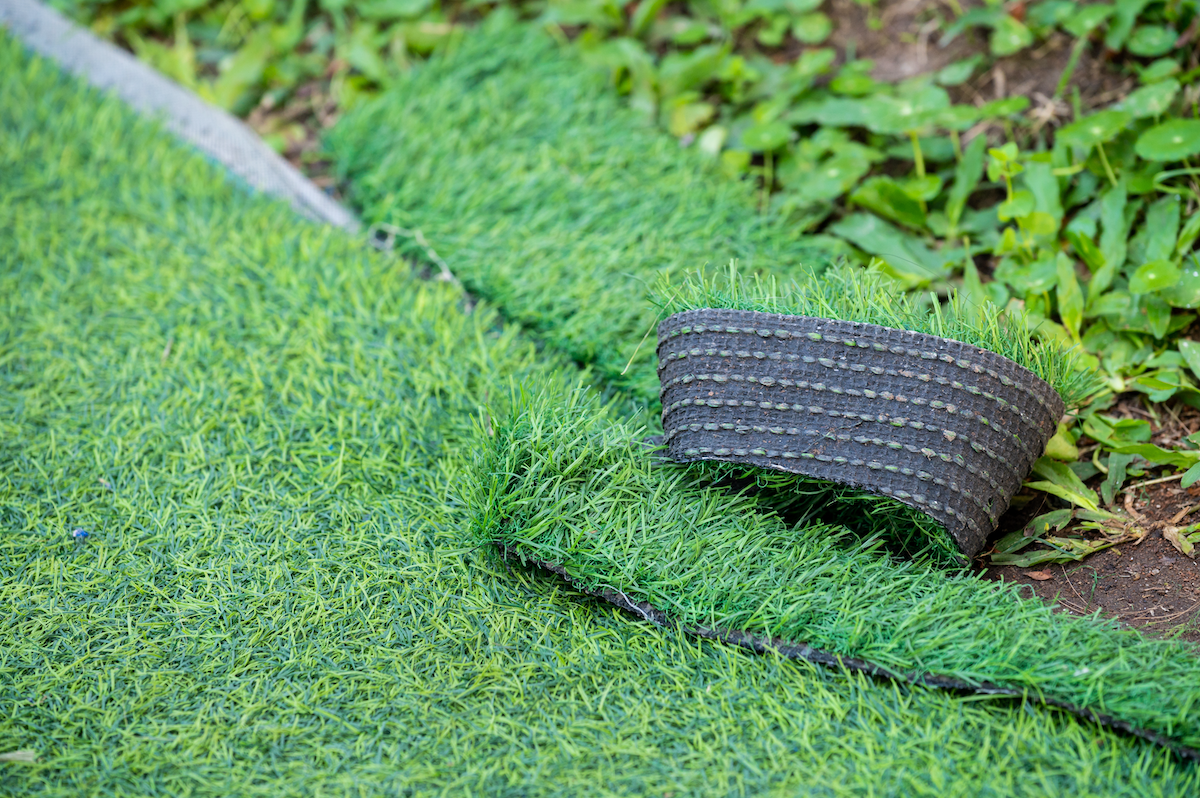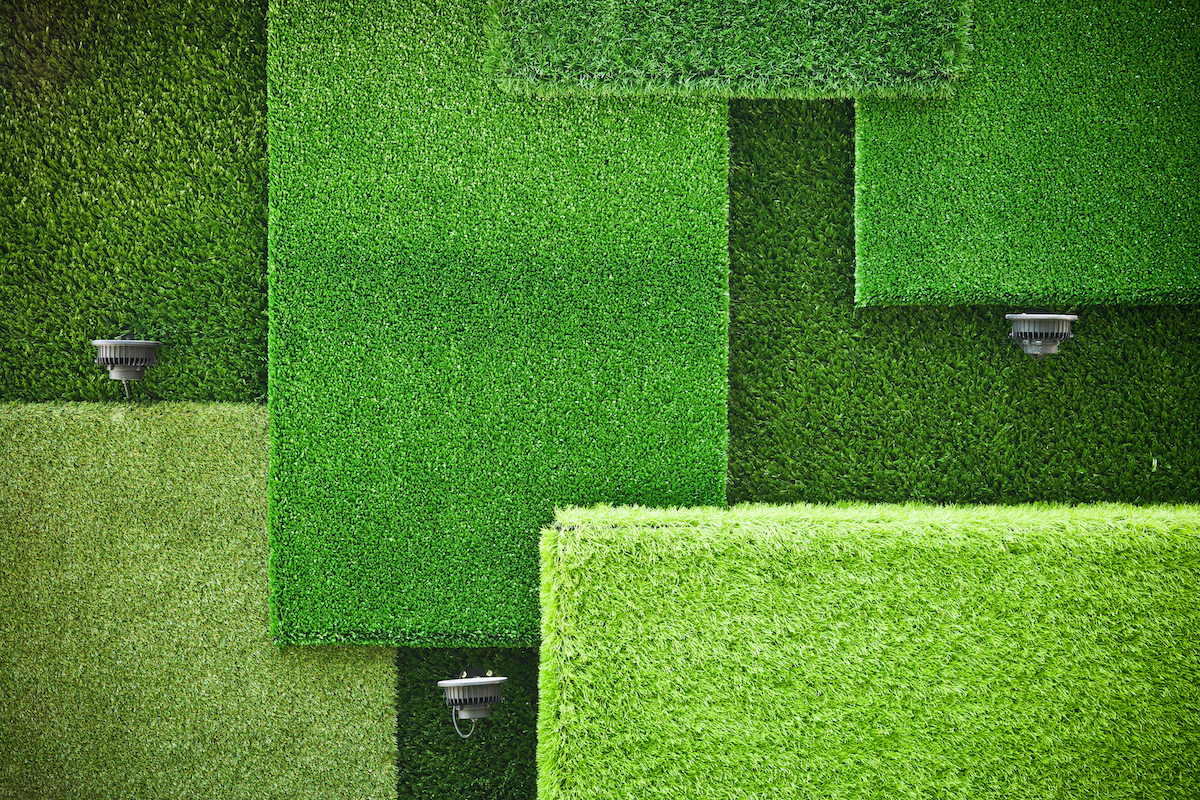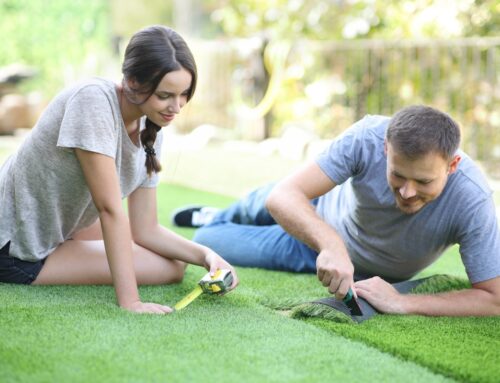Last Updated on October 8, 2025 by ReTurf
Long gone are the days of that unmistakable “fake grass” look that might have made you think twice about considering it for your own outdoor spaces. Carefully designed to mimic the color, texture, and feel of natural grass, modern, premium synthetic grass products boast greater durability and a much more realistic appearance—making it an increasingly attractive option for homeowners and commercial properties as well as sports facilities.
While there are substantial differences between the lower-quality artificial grass found at big box stores and high-grade, premium synthetic turf, all types of artificial grass can potentially experience some damage.
These types of problems are easily avoided—and most property owners will never have to worry about them. But if they do happen, they are fortunately very easy fixes.
Understanding & Preventing Artificial Turf Damage

Prevention is the best way to keep your artificial grass in pristine condition. Although the potential for damage is mainly a concern for the cheaper, consumer-grade turf rolls sold at big retailers, it’s still important to be aware of possible sources of damage if you have premium-grade turf.
Think of it like this: just as you’d take the same care to avoid damaging a budget vehicle or a luxury car—it’s essential to be aware of potential harm to your artificial turf. Sure, the luxury car may be more resilient and better equipped to handle crashes and wear and tear—but you’d still want to keep an eye on the road, park cautiously, and avoid potholes, right?
With that in mind, here are some potential sources of damage for artificial grass that may require professional or DIY repair:
- Punctures: Sharp objects can puncture artificial grass, so it’s essential to remove any sticks, rocks, or debris before installation and regularly check the area for anything that could cause damage. A simple puncture isn’t the end of the world, but large punctures or repeated damage can compromise the integrity of the grass and lead to a need for repair or replacement.
- Fire: While professional-grade synthetic turf is far less susceptible to heat damage than cheap consumer-grade turf, it’s still wise to be careful with open flames. It’s always a good idea to be cautious with lit cigarettes as well. While high quality artificial grass is designed with heat resistance in mind, as with regular, natural grass it’s best to dispose of lit cigarettes responsibly.
Repairing Damaged Artificial Turf Areas
If your turf has sustained damage, the repair process can be quite simple, depending on the size of the affected spot:
- DIY Repairs for Small Areas: For minor damages, removing and replacing a damaged “patch” can be a straightforward DIY project. If you’re not sure how to get started, check out this article for tips on cutting artificial turf.
- Professional Help for Larger Areas: In cases of more extensive damage, hiring professional turf installers might be necessary to ensure a seamless repair.
Also see: DIY Mistakes to Avoid Installing Artificial Grass
Tips for Color Matching the New Piece
Use Extra Pieces Leftover from Installation

It is always recommended to save any extra sections or rolls of turf that are not used during initial installation, just in case. If you have leftover pieces from the initial installation, using these remnants for repairs ensures the best color match.
Find the Best Match

If you don’t have extra pieces, consult with artificial turf professionals to find the closest match. Any color differences will fade over time as the new turf adjusts to the same exposure as the original, and adding the infill can help as well.
Much like when you touch up a patch on a wall with fresh paint, at first it might stand out a bit, but as time goes by, it gradually blends in seamlessly. Remember, we all have those little imperfections in our homes that only we seem to notice, and before long, your lawn will have that effortlessly uniform appearance that you desire.
Fitting the New Piece Seamlessly
To help ensure that the repaired area blends in, make sure to follow these steps:
- Align the Grass Fibers: Make sure the fibers of the new piece are facing the same direction as the existing turf.
- Add Infill: Properly distribute infill material to maintain consistency and appearance.
- Allow Time (and Use) for Natural Blending: Over time, regular use and weather exposure will help the new patch blend in seamlessly with the rest of the turf around it.
ReTURF can offer helpful advice on repair and installation techniques for your artificial grass. So, if you ever find yourself needing advice or facing any challenges with your artificial turf, don’t hesitate to reach out—we’ll be more than happy to help you get the best results possible.
Fixing Ripped Sections of Artificial Turf
Rips and tears can occur due to excessive force, accidents, or improper installation. Repairing these issues involves the following:
- Identify the Cause: Determine the root cause of the damage to prevent it from happening again.
- Repair the Rip: Use specialized adhesive (i.e. turf seaming tape) to reattach the torn section, following manufacturer instructions or consulting with professionals.
The Bottom Line

With proper care, potential issues can be avoided or easily fixed, ensuring a beautiful and durable lawn for years to come. If you have any concerns or need assistance with a project, the artificial grass experts at ReTURF are always available to lend a hand. Don’t hesitate to contact us—our professional staff is ready to answer your questions and assist you with your project planning needs. Give us a call at (828) 518-5787 or click here to email us.



